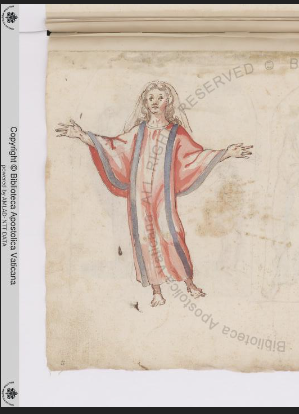As is often mentioned on this site, the importance of visual sources (signatures, drawings, maps, watercolour copies of ancient paintings) in the history of the discovery of Christian catacombs is incredible.
These sources assume greater weight especially for the initial centuries in the history of Christian archaeology, before the advent of photography.
Among the most famous scholars who proceeded massively to copy the paintings of the catacombs they saw in their explorations is the Andalusian Alonso Chacón (1540-1599).
Chacòn can certainly be considered an important ‘chronicler’ of the state of catacomb paintings in the period in which the scholar lived in Rome (1567-1599).This rich heritage of early Christian iconography can be found in the manuscripts of the Vatican Library Vat. lat. 5409. This work, which has never been published, contains precious drawings of catacomb paintings commissioned by the Dominican to several artists and referable to the pictorial apparatuses of the cemetery of via Anapo and the catacombs of Priscilla, Domitilla and the complexes of the via Appia.
From an artistic point of view, the watercolour copies of the paintings commissioned by Chacón do not reflect the original style of the paintings, as they are totally executed in a strongly Baroque style. Even the scenes are sometimes misrepresented.
In spite of these objective limitations, Chacón’s drawings remain a fundamental archaeological testimony (also for their descriptions and captions), as well as an absolutely enjoyable artistic work.
The Vat. lat 5409 manuscript is fully available in digital format on the Vatican Library website, on this page, which we highlight because of the usefulness of having such sources available digitally worldwide.
